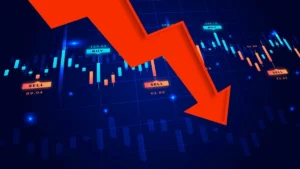Exchange-traded funds (ETFs) give investors in Singapore access to a variety of markets and asset classes. ETFs allow investors to diversify their portfolios, protect against market uncertainty, and minimize risk. With so many ETFs available, it can take time for investors to determine which ETF best suits their investment goals. This article will explore the different types of exchange-traded funds and how they can help you achieve your financial goals.
In Singapore, investors can trade ETFs with a reputable broker licensed by the MAS (Monetary Authority of Singapore), such as Saxo.
What is an ETF?
An ETF is defined as a collection of securities traded on an exchange such as stocks or bonds. These funds may hold stocks from one industry or country, bonds from multiple countries, or both. ETFs can give investors exposure to many different asset classes, such as stocks, bonds, commodities and currencies.
ETFs can be traded on various exchanges around the world, including Singapore. In Singapore, ETFs are traded on the Singapore Exchange (SGX), which offers a wide range of ETFs covering various asset classes, sectors, and geographical regions. Investors can access these ETFs through local and international brokers authorized to operate on the SGX.
Index funds
One type of ETF is an index fund. Index funds track underlying indexes such as the S&P 500 or the Nasdaq Composite Index. These funds mimic the performance of their respective indexes without the added risk. They are also relatively inexpensive compared to actively managed mutual funds because they require less work to maintain.
Sector-specific funds
The second type of ETF is the sector fund. Sector funds mainly invest in companies in specific industries or sectors such as energy, technology, healthcare, utilities, etc. These funds can allow investors to access sectors that would otherwise be too expensive or difficult to access independently.
Actively managed funds
The third type of ETF is an actively managed fund. These funds in Singapore are managed by professional fund managers in Singapore who use a variety of strategies and techniques to try to outperform the performance of the underlying index. This type of fund has higher fees because researching potential investments requires more work. However, it also has the potential to deliver higher returns if the manager is successful.
Inverse ETFs
Finally, inverse ETFs seek to provide investors with downside exposure to a specific asset or market. Inverse ETFs use derivatives such as options, futures and swaps to achieve this goal. These funds can be used for hedging purposes and provide investors in Singapore with a way to protect their portfolios from market volatility.
What are some trading strategies for ETFs?
When it comes to trading ETFs, there are several strategies that can be used. Investors should consider different strategies and determine which best suits their needs.
Dollar Cost Averaging (DCA)
A popular strategy is the Dollar Cost Averaging (DCA) strategy. DCA regularly invests a fixed amount in ETFs. This helps investors spread risk over time and get a better price for each investment. It also helps reduce volatility by removing the influence of time and market sentiment from the decision-making process.
Sector rotation
Another strategy is to use sector rotation. Sector rotation involves buying sectors that have recently performed better and selling those that have underperformed. This strategy can help investors maximize short-term opportunities in specific sectors or asset classes while maintaining diversification across different markets.
Value Investing
Value investing is another popular strategy for trading ETFs. Value investors look for investments that are undervalued by the market but have strong fundamentals, such as a high dividend yield or a low price-to-book ratio. By maintaining a value approach, investors can benefit from stocks with strong fundamentals, but their valuations may not get higher in the short term due to market sentiment or other factors. another factor.
Momentum investing
Momentum investing is another strategy that can be used when trading ETFs. Momentum investing involves buying stocks or sectors that have recently been successful and selling stocks or sectors that have recently struggled. This type of strategy requires careful research to identify potential opportunities, as well as an understanding of how quickly the market moves and changes direction without warning.
Final words
ETFs provide investors with access to different asset classes and markets. With so many ETFs available on the market, determining which ETF best suits your trading and investing goals can take time. By understanding different types of ETFs, as well as different trading strategies, you can find the right fund for your portfolio. You should also think about your own risk tolerance and your trading preferences, such as the amount of money you can afford to risk or how much time you have to monitor your investments. These play a part in your overall investment journey, and finding the right fit can contribute to your success.






More Stories
Gentle guidance that helps buyers move through each loan stage
Supported Living vs General Needs – Choosing the Right Social Housing Investment Model
Copy your trading strategies live with cloud technology